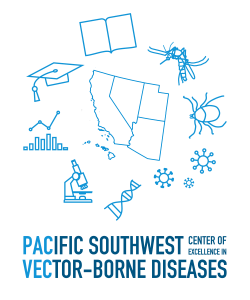<h1 class="alt white">State of the Art Wind Tunnel</h1>
<h5 class="alt white">Experiments on insect flight behavior under conditions <br />that mimic those in the field [Wind tunnel images, Active grid</h5>
<h1 class="alt white">Field Studies</h1>
<h5 class="alt white">Observations and measurements from field experiments to inform lab studies </h5>
<h1 class="alt white">Neurophysiology</h1>
<h5 class="alt white">Real time recording of neurons in the brain responding to odors</h5>
<h1 class="alt white">Anatomy</h1>
<h5 class="alt white">Confocal microscopy to map neurons and olfactory centers in the brain</h5>
About the Vickers Lab
We work at the intersection of basic and applied science. We examine insect flight behaviors in response to odors in both laboratory and field settings. Our current efforts are focused on understanding how insects navigate towards potential mates or other resources (e.g. female mosquitoes to potential hosts for a blood meal; male moths to females for mating). We focus on agriculturally important moth species and mosquitoes that pose a health threat to humans (by transmitting viruses or other pathogens). We also study how smells are detected and processed by the insect brain. Our goal is to acquire fundamental knowledge that may be useful in addressing the impact of insects on food and health (moths on agriculture and mosquitoes that vector human diseases). Our research involves robust collaborations between scientists, engineers, and mosquito control organizations.
Research Support
Our research is currently supported by NSF and the Pacific Southwest Center of Excellence in Vector-
borne Diseases (with funding from the Centers for Disease Control)






